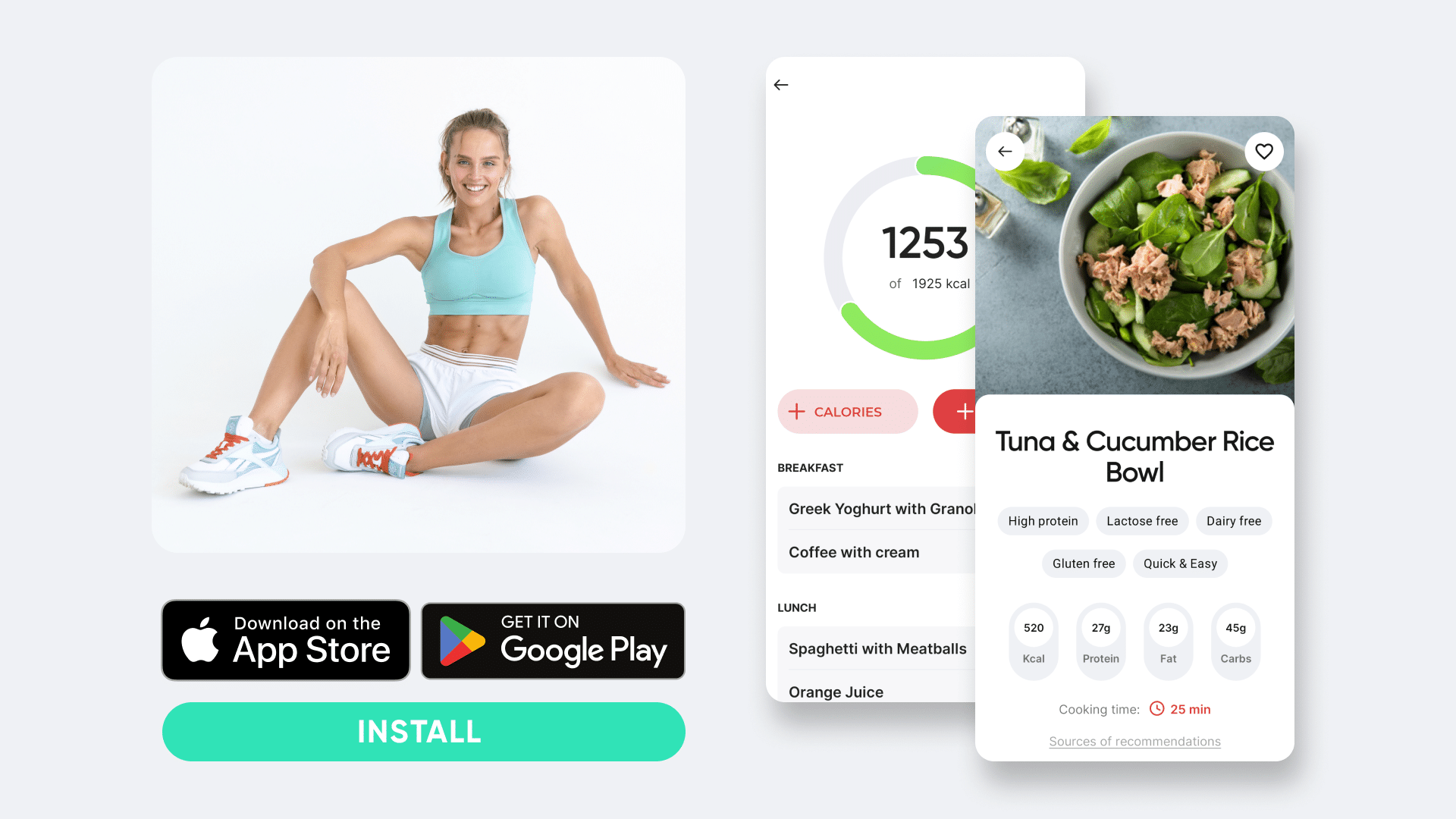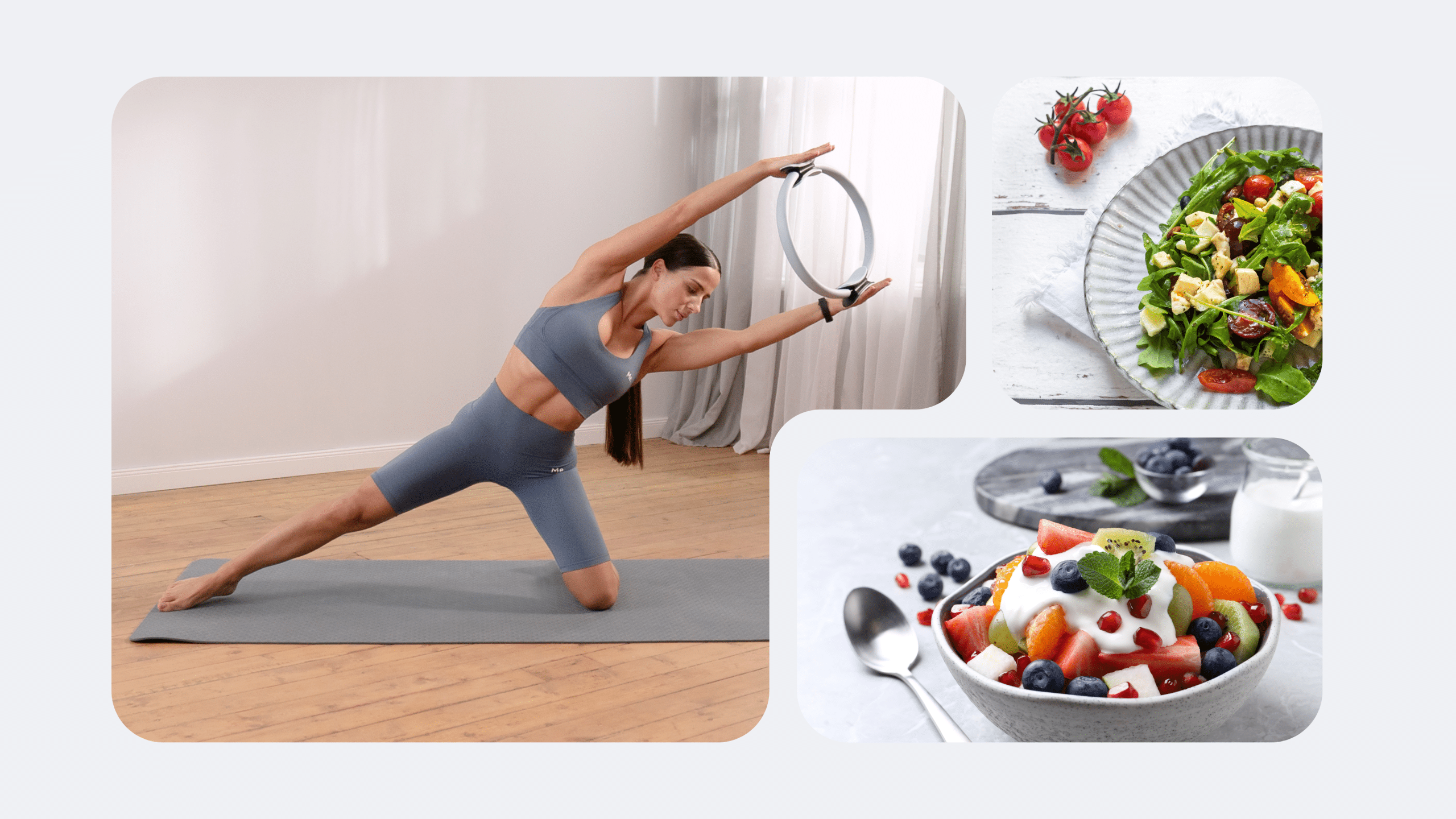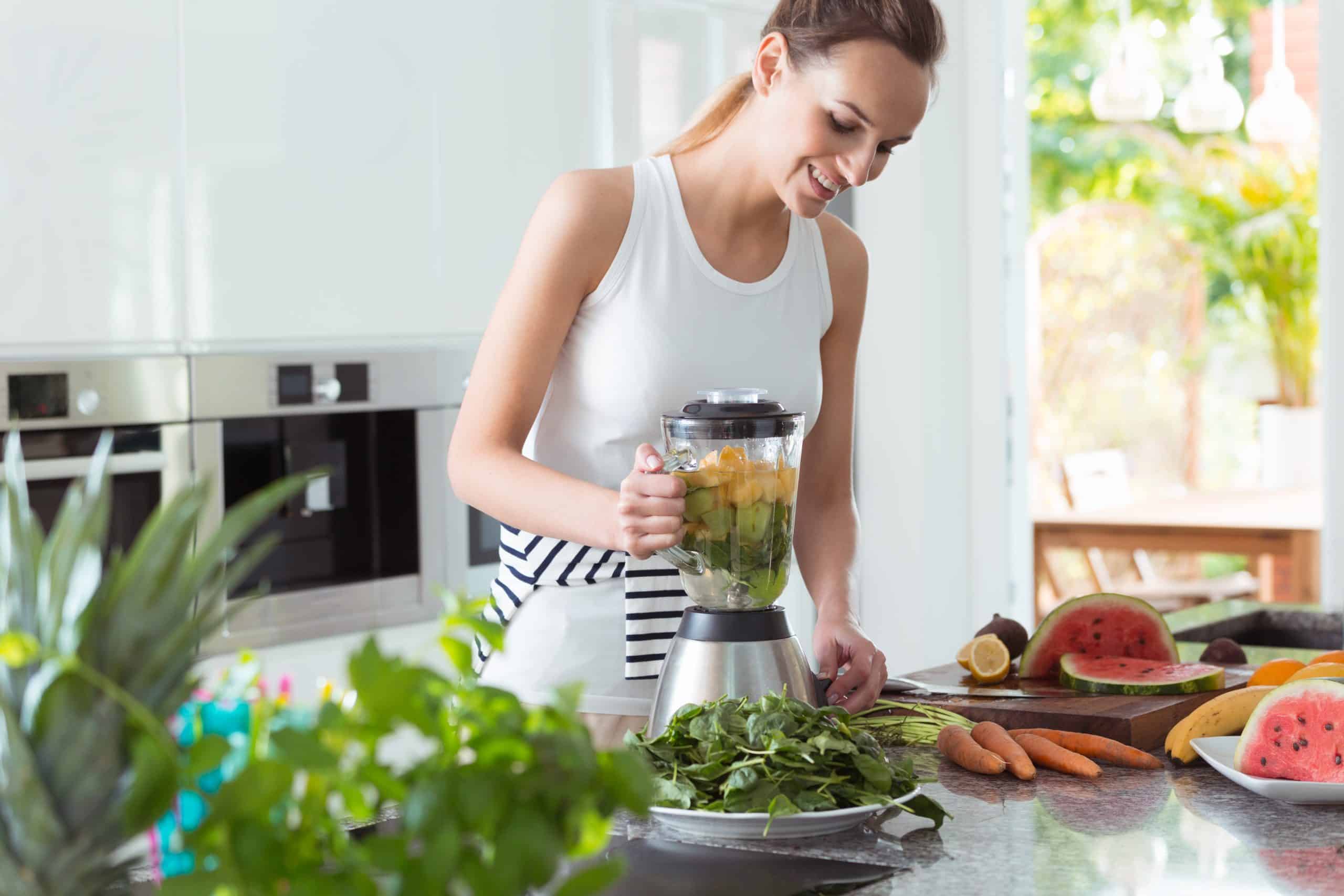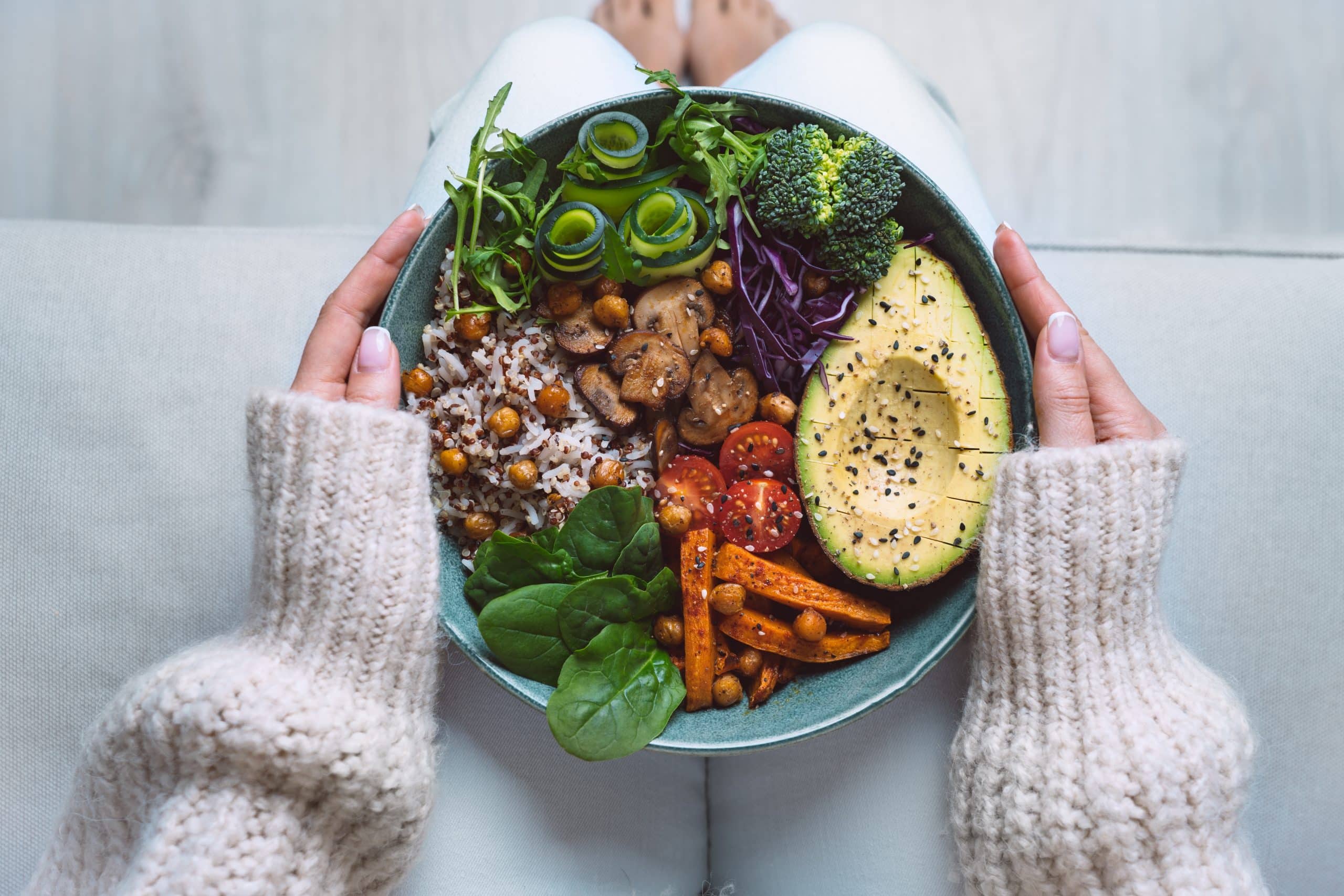If you’re reading this, I’m assuming that you’re either one of the brave souls who have decided to make a change to their lifestyle or you’re simply curious about what cutting is all about. Either way, you’re in for quite a treat.
Cutting is possibly the most challenging part of anyone’s fitness journey, but it’s also the most rewarding. One vital component of cutting is nutrition. As someone who has been through multiple cutting phases, I know how overwhelming it can be to find the best foods for your goals without sacrificing taste.
Fear not! I’ve compiled a list of the top 10 best foods you need to add to your grocery list right now. Before we get to that, we’ve got answers to all your questions about cutting and nutrition.
What Is a Cutting Diet?
A cutting diet is a type of diet plan that is designed to help individuals lose body fat while preserving muscle mass. This diet is specifically used to achieve the fitness goal of weight loss or shedding (1).
What sets a cutting diet apart from other diets is its specific focus on macros. Cutting diets typically involve tracking and manipulating macronutrient ratios, which are the amounts of protein, carbohydrate, and fat consumed per day. The primary goal is to create a calorie deficit, which means consuming fewer calories than the body burns (2).
How Does Cutting Compare to Bulking?
Cutting and bulking are two different approaches to achieving fitness goals. Bulking involves consuming more calories than you burn to build muscle mass, while cutting involves consuming fewer calories than you burn to lose fat and reveal muscle definition (3).
When it comes to comparing cutting to bulking, it really depends on your personal fitness goals. If you’re looking to build muscle mass quickly, then bulking may be the right approach for you. However, you should keep in mind that bulking can also result in gaining some fat along with muscle mass.
However, if you’re looking to achieve a lean and toned physique, then cutting may be the best option. While cutting involves consuming fewer calories, it’s important to ensure that you’re still consuming enough nutrients to support your fitness goals and maintain your overall health.
Ultimately, the most effective approach to achieving your fitness goals will depend on a variety of factors, including your individual body type, fitness level, and personal preferences. It’s always a good idea to consult a certified fitness professional to determine the best approach for your specific needs.
What Are the Recommended Macronutrient Ratios for Cutting?
While cutting, it’s common to focus on reducing body fat while preserving muscle mass. One important aspect of achieving this goal is to pay attention to your macronutrient ratios.
Macronutrients are nutrients your body needs in large amounts, including protein, carbohydrates, and fat (4). While everyone’s needs are different, the ranges of acceptable macronutrient ratios are between 10-35% protein, 45-65% carbohydrates, and 20-35% fat.
This breakdown allows for enough protein to preserve muscle mass while still providing enough carbohydrates and fat for energy and overall health. However, you should keep in mind that these ratios are just a starting point and can be adjusted based on individual needs and preferences.
For example, if you’re more active, you may need more carbohydrates to fuel your workouts, or if you prefer a higher-fat diet, you may need to adjust your macronutrient ratios accordingly.
Protein is an essential macronutrient for muscle growth and maintenance and it’s particularly important when cutting (5).
When you’re in a calorie deficit, your body may turn to muscle tissue for energy, which can lead to muscle loss (6).
Consuming a higher amount of protein along with strength training can help counteract this effect by promoting muscle protein synthesis and reducing muscle breakdown (7).
You should aim to consume approximately 1.6 grams of protein per pound of body weight per day when cutting (7). For example, if you weigh 150 pounds, you should aim for approximately 240 grams of protein per day.
Total Calorie Intake for Cutting
In addition to macronutrient ratios, total calorie intake is also important for cutting. In order to lose body fat, you must be in a calorie deficit by consuming fewer calories than your body burns (2). This deficit can be achieved by reducing your overall calorie intake and/or increasing activity levels.
You should aim for a calorie deficit of approximately 500-750 calories per day when cutting. This should result in a weight loss of approximately 1-2 pounds per week (8). However, it’s important to keep in mind that individual needs and preferences may vary, and it’s important to experiment to find what works best for you.
Whether you’re a workout beast or just a beginner making your first foray into the world of fitness and dieting – BetterMe has a lot to offer to both newbies and experts! Install the app and experience the versatility first-hand!
What’s the Recommended Meal Timing and Frequency for Cutting?
When it comes to cutting or losing body fat, meal timing and frequency play important roles in your results. Here are some recommended meal timing and frequency strategies for cutting:
- Eat Every 3-4 Hours: To keep your metabolism revving, it’s optimal to eat every 3-4 hours. This allows for a steady stream of energy and nutrients to fuel your body throughout the day.
- Consume a Protein-Packed Breakfast: Starting your day with a breakfast high in protein can help to keep you feeling full and satisfied, which can help prevent overeating later in the day (9).
- Incorporate Intermittent Fasting: This eating pattern involves fasting for a certain period of time (usually 16-24 hours) and then eating during a set window of time. Many people find this strategy to be helpful for cutting as it can reduce overall caloric intake (10).
- Time Your Carb Intake: To maximize fat-burning, it’s best to consume carbohydrates primarily around your workout. This gives your body the fuel it needs to power through your workout while also minimizing storage of excess carbs as fat (11).
Generally, the most important factor in cutting is to create a calorie deficit. Finding a meal timing and frequency strategy that works for your lifestyle and preferences can help you achieve your goals while still allowing you to enjoy your food.
What Should You Eat when Cutting?
When you’re cutting, you don’t need to completely overhaul your diet. Instead, you should focus on choosing nutrient-dense, whole-food sources of macronutrients and sticking to your calorie goals. Here are some healthy foods to consider when cutting:
1. Salmon
Salmon is an excellent source of protein, omega-3 fatty acids, and vitamin D (12). Its healthy fats can help regulate blood sugar levels and inflammation, which makes it an ideal food for weight loss. A recommended serving size is 3-4 ounces, which can be easily incorporated into a salad or used in a healthy stir-fry recipe.
Try delicious baked salmon with a honey mustard glaze. Combine 2 tbsp honey, 2 tbsp Dijon mustard, 1 tbsp olive oil, and 1 tbsp lemon juice. Brush over 4 salmon fillets and bake at 400°F for 12-15 minutes.
2. Leafy Greens
Leafy greens such as spinach and kale are low in calories and high in nutrients such as vitamins A and C, iron, and calcium. They contain fiber, which promotes satiety and keeps you feeling full for longer (13).
A recommended serving size is 1-2 cups, which can be added to smoothies or used as a base for a salad. Make a fruity summer salad with 2 cups of spinach, 1 cup of sliced strawberries, ½ cup of blueberries, ⅓ cup of chopped almonds, and 2 tbsp of balsamic vinaigrette.
3. Berries
Berries, including blueberries, strawberries, and raspberries, are high in fiber and antioxidants, which makes them a great choice for weight loss (14). They’re low in calories and contain high amounts of water, which promotes hydration.
A recommended serving size is ½ to 1 cup, which can be eaten alone or used in a healthy dessert recipe. Enjoy a healthy dessert with a Greek yogurt and berry parfait. Layer ½ cup of Greek yogurt, ½ cup of mixed berries, and 1 tbsp of granola in a cup or jar.
4. Quinoa
Quinoa is a great source of protein, fiber, and complex carbohydrates. Its fiber helps regulate blood sugar levels and promotes feelings of fullness (15).
A recommended serving size is ½ cup cooked, which can be used as a base for a healthy bowl recipe or added to a salad for extra protein.
Make a delicious quinoa bowl with ½ cup of cooked quinoa, 1 cup of roasted vegetables, ½ cup of black beans, and 2 tbsp of salsa.
5. Greek Yogurt
Greek yogurt is high in protein and contains probiotics, which serve to promote healthy gut bacteria and improve digestion. It helps regulate blood sugar levels, which makes it an ideal food for weight loss (16).
A recommended serving size is ½ cup, which can be used in a smoothie or eaten as a healthy snack. Enjoy a protein-packed smoothie with ½ cup of Greek yogurt, ½ cup of mixed berries, ½ banana, and 1 tbsp of honey.
Read more: 3 Healthy Curry Recipes To Turn To When You Need Comfort Food
6. Avocado
Avocado is high in heart-healthy mono-unsaturated fats, fiber, and potassium and can help reduce blood pressure. Its healthy fats may also help improve insulin sensitivity, which could contribute to healthy weight loss (17).
A recommended serving size is ½ an avocado, which can be mashed and used in a sandwich or added to a salad.
Make a delicious avocado toast with a soft-boiled egg, diced tomatoes, and a pinch of salt and pepper.
7. Apple Cider Vinegar
Apple cider vinegar is believed to help reduce appetite, improve digestion, and boost metabolism. It may also help improve blood sugar and blood lipid levels (18). A recommended serving size is 1 tbsp, which can be mixed with water or used in dressings.
Try a honey mustard vinaigrette with 2 tbsp of apple cider vinegar, 1 tbsp of Dijon mustard, 1 tbsp of honey, and 1 tbsp of olive oil.
8. Chia Seeds
Chia seeds are high in fiber and omega-3 fatty acids, which makes them a great food for weight loss. They also contain antioxidants that may help reduce inflammation (19).
A recommended serving size is 2 tbsp, which can be added to oatmeal, smoothies, or used as an egg substitute in baking.
Make a nutritious chia seed pudding with 2 tbsp of chia seeds, ¾ cup of almond milk, and some honey for sweetness
9. Watermelon
Watermelon is a refreshing fruit that’s low in calories and high in hydration. It contains lycopene and vitamins A and C, which are antioxidants (20).
A recommended serving size is 1-2 cups, which can be eaten alone or used in a healthy smoothie recipe.
Make a healthy summer salad with 2 cups of spinach, 1 cup of diced watermelon, crumbled feta cheese, and a balsamic dressing.
10. Nuts
Nut varieties such as almonds, pistachios, and walnuts are high in fiber, protein, and healthy fats and can help regulate hunger and boost energy levels (21).
A recommended serving size is ¼ cup, which can be eaten as a snack or used in a healthy recipe.
Enjoy a homemade trail mix with ¼ cup of mixed nuts, ¼ cup of dried cherries, and 2 tbsp of dark chocolate chips.
11. Water
Water is essential for weight loss as it helps flush out toxins and keep the body hydrated (22). You should aim to drink 8 glasses of water a day to stay hydrated and feel fuller for longer. Try adding lemon or cucumber slices for an extra hit of flavor.
What Foods Should You Avoid While Cutting?
We know the best foods for cutting, now it’s time to talk about the foods we should avoid. Cutting is all about reducing calorie intake while maintaining a balanced diet, so these are the foods that can impede your progress and make cutting more difficult.
Processed Foods
Processed foods are high in calories, sodium, unhealthy fats, and added sugars. They often lack essential nutrients and fiber, which makes them unsatisfying and easy to overeat (23).
Examples of processed foods include chips, cookies, candy, fast food burgers, frozen dinners, and sugary drinks.
These types of foods should be avoided on a cutting diet as they offer little nutritional value and can hinder your weight loss goals.
High-Calorie Beverages
Sugary drinks such as soda, energy drinks, and fruit juices can add unnecessary calories to your diet without providing any nutritional value (24). They also don’t make you feel full in the same way solid food does, which makes it easier to consume extra calories without realizing it.
Alcohol is another high-calorie beverage that should be limited during a cutting phase as it can increase your calorie intake and hinder your weight loss efforts (25).
To remain hydrated while cutting, opt for water or unsweetened beverages such as tea or black coffee. These options are calorie-free and won’t sabotage your progress.
Refined Carbohydrates
Refined carbohydrates such as white bread, pasta, rice, and pastries have been processed to remove the fiber-rich outer layer of grains. This process results in food that is quickly digested and absorbed by the body, which leads to spikes in blood sugar levels and potential weight gain (26). In addition, refined carbs often lack the essential nutrients that are found in whole-grain options.
Foods with Saturated and Trans Fats
Saturated and trans fats are considered “bad” fats as they can increase cholesterol levels and increase the risk of heart disease. Foods that are high in these types of fats include red meat, fried foods, processed meats, and baked goods made with hydrogenated oils. Opt for healthy fat sources such as avocados, nuts, and olive oil instead (27).
Dropping pounds by the dozens without putting yourself through the wringer is everyone’s weight loss pipe dream. But what if we told you that the BetterMe app can make that happen? Keep yourself in prime shape with our fat-blasting workouts, delicious budget-sparing recipes, and body-transforming challenges with our app!
What Are Some Helpful Tips for Sustaining a Cutting Diet?
Sticking to a cutting diet can be challenging, but the following tips can help you stay consistent and reach your goals:
- Plan meals in advance: Planning your meals ahead of time can help you stick to your diet and avoid impulsive food decisions.
- Track your daily caloric intake: Tracking your caloric intake is essential for achieving your weight loss goals. Use a calorie-tracking app or keep a food journal to monitor your daily intake.
- Prioritize protein: Protein is essential for preserving lean muscle mass while cutting fat (7). Make sure you consume lean protein sources, such as chicken, fish, and lean beef, regularly throughout the day.
- Incorporate healthy fats: Healthy fats, such as avocados and nuts, can help you feel full and satisfied while cutting calories (28).
- Stay hydrated: Drinking plenty of water can help you feel full and curb your appetite. You should aim for at least 8 glasses of water per day.
- Increase your vegetable intake: Vegetables are rich in vitamins, minerals, and fiber and can help you feel fuller for longer periods of time. You should aim for at least 2 cups of vegetables per meal (28).
- Reduce your intake of processed foods: Processed foods are often high in calories, sodium, and unhealthy fats and can sabotage your efforts to sustain a cutting diet (23). Focus on whole, natural foods instead.
- Practice mindful eating: Mindful eating can help you better understand your hunger and cravings and prevent overeating (29). Take the time to savor each bite, and pay attention to your body’s signals of hunger and fullness.
- Get enough sleep: A lack of sleep can lead to imbalances in hormones that may increase hunger and cravings (30). You should aim for at least 7-8 hours of sleep per night.
- Be patient and kind to yourself: Sustaining a cutting diet can be challenging and may involve ups and downs. Remember to be patient and kind to yourself and focus on the progress you’ve made, rather than small setbacks.
Read more: Keto-Friendly Thai Food: 8 Thai Dishes to Eat and 5 to Avoid on the Keto Diet
FAQs
Is a 5-week cut enough?
A 5-week cut may seem like a short amount of time, but it can actually be enough to see noticeable changes in your body composition. However, the extent of these changes will depend on various factors such as your starting point, dedication to your diet and exercise routine, and individual differences in metabolism.
Importance of Starting Point
Your starting point plays a vital role in determining whether 5 weeks is enough for a significant transformation during a cut. If you’re already at a relatively low body fat percentage and have been consistently following a healthy lifestyle, 5 weeks might not make much of a difference.
However, if you’re at a higher body fat percentage and have been living a sedentary lifestyle, 5 weeks can be enough to jumpstart your weight loss journey and see significant results. It’s essential to have realistic expectations based on your individual starting point.
Dedication to Diet and Exercise
Consistency is key when it comes to achieving any fitness goal. A 5-week cut will only be effective if you remain dedicated to your diet and exercise routine throughout the entire duration. This means sticking to a calorie deficit, eating clean, and following a structured workout plan.
If you’re able to maintain this level of dedication for 5 weeks, you can definitely see visible changes in your body. However, if you’re constantly indulging in cheat meals or skipping workouts, 5 weeks may not be enough to see significant results.
Individual Differences in Metabolism
Another factor that can affect the success of a 5-week cut is individual differences in metabolism. Some people naturally have a faster metabolism, which makes it easier for them to lose weight and see changes in their body composition (31).
On the other hand, individuals with slower metabolisms may require more time to see similar results. This doesn’t mean that a 5-week cut won’t work for them, but it may take a bit longer before they see noticeable changes.
How do I start cutting?
Start cutting by determining your specific fitness goals and creating a plan to achieve them. This should include setting a realistic timeframe, calculating your daily calorie needs, and creating a workout routine that involves a combination of HIIT and strength training (32).
It’s also important to keep track of your progress by regularly taking measurements and photographs. This will help you stay motivated and allow you to make adjustments to your plan if necessary.
In addition, it’s important to keep in mind that cutting doesn’t mean starving yourself or drastically reducing your calorie intake. It’s about making healthy food choices and being in a slight calorie deficit, typically 500-1,000 calories below maintenance level.
Is bread good on a cut?
Eating bread on a cut can be good or bad, depending on how you go about it.
Bread is often seen as an enemy during a cut as it’s a carbohydrate-rich food.
Carbohydrates are the body’s main source of energy, and when we consume more calories than we need, our bodies store the excess as fat (33). This is where the misconception that cutting out bread will help with weight loss comes from.
However, eliminating bread from your diet completely may not necessarily be beneficial for your health or your cut. Bread can provide essential nutrients such as fiber, B vitamins, and minerals such as iron and magnesium. It can also be a convenient and tasty source of carbohydrates for fueling workouts.
Bread can be good on a cut if:
- You choose the right type of bread: Opt for whole-grain or whole-wheat bread instead of white bread. Whole-grain and whole-wheat bread contain more fiber, which helps keep you feeling full and satisfied for longer. It also has a lower glycemic index, which means that it won’t spike your blood sugar levels as quickly (26).
- You control your portion sizes: As with any food, moderation is key. Bread can still contribute to weight gain if it’s consumed in excess, so you should make sure you keep an eye on how much you’re eating.
- You pair it with protein and healthy fats: To make your bread even more beneficial on a cut, pair it with protein and healthy fats. This will add more nutrients to your meal while helping you remain full for longer (28).
- You choose nutrient-dense spreads: Instead of loading up on high-calorie spreads such as butter or cream cheese, opt for healthier options such as avocado spread, hummus, or nut butter.
How much protein should I consume when cutting?
You should consume approximately 0.8 to 1 gram of protein per pound of body weight, especially if you’re lean (5). However, opinions vary slightly on this topic. Some sources suggest maintaining a protein intake of 1.4 – 2.0 grams per pound of lean body mass (34).
Ultimately, it’s important to find a protein intake level that works best for your body and fitness objectives.
Here are some guidelines to help you determine how much protein you should consume when cutting:
- If you’re a beginner or relatively new to weightlifting, you should aim for the lower end of the recommended range (1.4 grams per pound of body weight).
- If you have a significant amount of muscle mass and/or are engaging in intense workouts, you should aim for the higher end of the recommended range (2.0 grams per pound of body weight).
- Pay attention to your body’s response: If you’re feeling fatigued or not seeing results, consider increasing your protein intake.
- Spread out your protein intake throughout the day: You should aim for 3-4 evenly spaced meals with a source of protein in each one.
- Don’t rely on supplements alone: While protein supplements can be convenient, it’s important that you also get protein from whole food sources such as lean meats, eggs, and legumes.
How do I know if I’m cutting successfully?
The most obvious way to determine whether you’re cutting successfully is by tracking your weight and body measurements. If you’re consistently losing weight and seeing a decrease in body fat, your cut is most likely working.
However, there are other signs that can indicate successful cutting, including feeling more energized during workouts, noticing an increase in muscle definition, and feeling confident in your progress. It’s also important to track how you feel mentally and emotionally during your cut. If you’re feeling overly restricted or deprived, this may be a sign that you need to adjust your approach.
Success shouldn’t be determined based solely on physical changes but also by how you feel and your overall well-being. Remember to be patient with the process as cutting takes time and consistency to see results.
The Bottom Line
Cutting is a popular body transformation strategy that involves reducing calories and increasing exercise to create a calorie deficit. Meal timing and frequency strategies can help maximize fat loss while allowing you to still enjoy food.
In addition, some helpful tips for sustaining a cutting diet include planning meals in advance, tracking daily caloric intake, and prioritizing protein, healthy fats, and vegetables.
DISCLAIMER:
This article is intended for general informational purposes only and does not serve to address individual circumstances. It is not a substitute for professional advice or help and should not be relied on for making any kind of decision-making. Any action taken as a direct or indirect result of the information in this article is entirely at your own risk and is your sole responsibility.
BetterMe, its content staff, and its medical advisors accept no responsibility for inaccuracies, errors, misstatements, inconsistencies, or omissions and specifically disclaim any liability, loss or risk, personal, professional or otherwise, which may be incurred as a consequence, directly or indirectly, of the use and/or application of any content.
You should always seek the advice of your physician or other qualified health provider with any questions you may have regarding a medical condition or your specific situation. Never disregard professional medical advice or delay seeking it because of BetterMe content. If you suspect or think you may have a medical emergency, call your doctor.
SOURCES:
- What a cutting diet is and how to follow it (2020, medicalnewstoday.com)
- Optimal Diet Strategies for Weight Loss and Weight Loss Maintenance (2021, ncbi.nlm.nih.gov)
- Dietary Strategies of Modern Bodybuilders (2021, ncbi.nlm.nih.gov)
- Macronutrients and Human Health for the 21st Century (2020, ncbi.nlm.nih.gov)
- Dietary Protein and Muscle Mass: Translating Science to Application and Health Benefit (2019, ncbi.nlm.nih.gov)
- Effects of Weight Loss on Lean Mass, Strength, Bone, and Aerobic Capacity (2018, ncbi.nlm.nih.gov)
- Recent Perspectives Regarding the Role of Dietary Protein for the Promotion of Muscle Hypertrophy with Resistance Exercise Training (2018, ncbi.nlm.nih.gov)
- Weight loss: 6 strategies for success (2024, mayoclinic.org)
- Protein, weight management, and satiety (2008, sciencedirect.com)
- Intermittent fasting and weight loss (2020, ncbi.nlm.nih.gov)
- Exercise and Regulation of Carbohydrate Metabolism (2015, ncbi.nlm.nih.gov)
- NUTRITION (n,d,globalsalmoninitiative.org)
- Nutrients and bioactives in green leafy vegetables and cognitive decline (2018, ncbi.nlm.nih.gov)
- Berry Phenolic Antioxidants – Implications for Human Health? (2018, ncbi.nlm.nih.gov)
- Nutritional Composition and Bioactive Components in Quinoa (Chenopodium quinoa Willd.) Greens: A Review (2022,nih.gov)
- Is consuming yoghurt associated with weight management outcomes? Results from a systematic review (2016,nih.gov)
- Hass Avocado Composition and Potential Health Effects (2013,nih.gov)
- The effect of apple cider vinegar on lipid profiles and glycemic parameters: a systematic review and meta-analysis of randomized clinical trials (2021,ncbi.nlm.nih.gov)
- The Chemical Composition and Nutritional Value of Chia Seeds—Current State of Knowledge (2019, ncbi.nlm.nih.gov)
- Watermelon lycopene and allied health claims (2014, ncbi.nlm.nih.gov)
- Health Benefits of Nut Consumption (2010, ncbi.nlm.nih.gov)
- Increased Hydration Can Be Associated with Weight Loss (2016,nih.gov)
- Ultra-processed Food Intake and Obesity: What Really Matters for Health – Processing or Nutrient Content? (2018, ncbi.nlm.nih.gov)
- Effects of Soft Drink Consumption on Nutrition and Health: A Systematic Review and Meta-Analysis (2007, ncbi.nlm.nih.gov)
- Alcohol Consumption and Obesity: An Update (2015, ncbi.nlm.nih.gov)
- Carbohydrates and Blood Sugar (n.d., nutritionsource.hsph.harvard.edu)
- A healthy approach to dietary fats: understanding the science and taking action to reduce consumer confusion (2017, ncbi.nlm.nih.gov)
- Optimising foods for satiety (2015, sciencedirect.com)
- Mindful Eating: The Art of Presence While You Eat (2017, ncbi.nlm.nih.gov)
- Sleep Deprivation: Effects on Weight Loss and Weight Loss Maintenance (2022, ncbi.nlm.nih.gov)
- Does Metabolism Matter in Weight Loss? (2024, health.harvard.edu)
- HIIT and Strength Training – Should You Do Both? (2022, issaonline.com)
- Physiology, Carbohydrates (2023, ncbi.nlm.nih.gov)
- International Society of Sports Nutrition Position Stand: protein and exercise (2017, ncbi.nlm.nih.gov)









